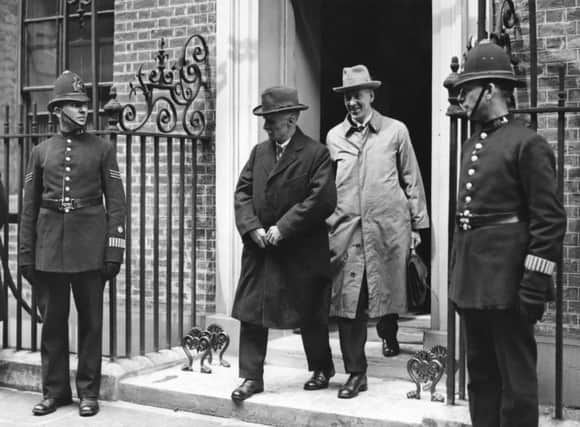Gregor Gall: Unions could become extinct unless they start winning strikes


Now, in short, work is often poorly paid, employment is increasingly insecure, for many there is not enough of it, and employers usually have the whip hand. This means there is the manifest need for union representation but not the corresponding power of unions to right these wrongs in the labour market and wider society.
Signified by the founding meeting being held in the city’s Mechanics’ Institute, when the TUC was established it was largely for union members who were skilled male workers – those that had trades. But not long after, unskilled workers joined unions which became affiliated to the TUC. And, after them, women workers and public sector workers then also joined the union fold in large numbers.
Advertisement
Hide AdAdvertisement
Hide AdSuch were the numbers in the union movement come the 1960s and 1970s that not only were the TUC’s general secretaries household names but prime ministers, Labour and Conservative, feared and respected them in equal measure. This was the era of “beer and sandwiches” where governments, unions and employers sat down together to discuss economic matters. In this era, the TUC was portrayed as a powerful, if slow and plodding, “old cart horse”.
The entry of the Conservatives into Downing Street in May 1979 turned out to be a long and painful period for the TUC and its union affiliates. Membership fell by around a half and doors were closed in their faces by government and employers alike. So, the TUC has struggled to regain and maintain its influence. There was no great fillip during the period of Labour governments from 1997 to 2010. Unions were regarded as unwelcome relatives at a family party even though they sought3 to engage in partnership with employers and widen their bargaining agenda to include skills and training. Despite the age of austerity since the 2007-2008 financial crash and a new younger and woman leader since 2013, the TUC has struggled to play the role in aggregating and mobilising the patent discontent that exists amongst workers and their families as income inequality has continued to grow. Food banks have replaced alms houses while zero-hour contracts are like a modern form of day labouring. The TUC missed the opportunity to forge an alliance between the providers of public services – at least those who are public sector union members – with the users of those services.
The problems that the TUC and unions today face are three-fold in terms of their renewal and revitalisation. First, unions are still wrongly portrayed by the media and many politicians as generators of conflict so there is hostility. Second, many workers do not know what a union stands for and does, so there is ignorance. And third, many workers think unions are now too weak to help them so there is a perception of powerlessness.
There are obvious solutions to these issues in terms of education, media work and becoming more assertive. Each solution has implications for resources – with more resources, the TUC could do more on each of these fronts but currently it is restricted in what it can do.
There is one possible way it could help square the circle though. This is through specifically targeting recruitment of younger workers. In the late 1990s, the TUC led the way by getting its affiliates to spend more resources on recruitment, retention and organising. It set up an Academy to do so. Today, it is aiming to do something similar with younger workers but with less of a physical approach and more of a virtual one.
Unionisation rates for younger workers are pitifully low – at less than 10 per cent for 16 to 24-year-olds. Amongst older workers, density is the highest at 30 per cent for those 50 and over. This presents the TUC with an existential crisis – in a generation of two, unions could face literal extinction.
The TUC is leading the campaign to convince its affiliates to talk to young workers in a medium and a language that is suited to younger workers, rather than the union themselves. So issues will also include rent, mental health, careers and the like and through the array of new social media platforms.
Targeting younger workers using new technology to communicate new issues is not just a case of “motherhood and apple pie”. Momentum within Labour has shown how purposeful activism can be ignited while Labour itself has demonstrated that having the correct message can lead to widespread connection.
Advertisement
Hide AdAdvertisement
Hide AdBut alongside this, the TUC and its unions must also do something else. They must be able to show a hundred-fold more that the cases of successful strikes and other collective actions at McDonald’s, Deliveroo, TGI Friday and Uber – involving predominantly younger workers in low-paid, insecure jobs – are not aberrations. So they must win disputes and be seen to win them. Here, some very small unions (BFAWU, IWGB) and some very large ones (GMB, UNITE) have shown on occasion what can be achieved.
If they can do that, the prospect of an upward virtuous spiral of growing membership and power can come into view. The old carthorse could be transformed into an agile young filly. This would mean the TUC is not just the collective voice for workers’ rights but also the collective enforcer for these rights. It would mean helping lead disputes and organising solidarity for those in dispute so that the sense of the time-honoured slogans of “unity is strength” and “an injury to one is an injury to all” would again be meaningful and manifest. Yet none of this will be easy to achieve without a change in government so much depends upon a Corbyn entering 10 Downing Street to help change the external legal and political environments to enable this to happen.
Professor Gregor Gall is an affiliate research associate at Glasgow University
